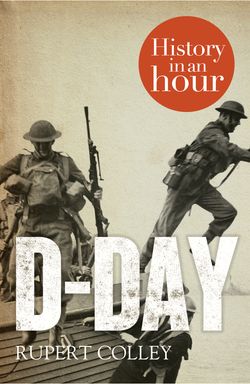Читать книгу D-Day: History in an Hour - Rupert Colley - Страница 8
COSSAC
ОглавлениеAs a consequence of Casablanca, in March 1943, Lieutenant-General Sir Frederick Morgan was charged with the initial planning of a cross-Channel invasion of occupied Western Europe, codenamed Overlord, to include a naval assault, codenamed Neptune. Morgan, leading a team of fifty, was given the title Chief of Staff to the Supreme Allied Commander (COSSAC), though the Allies had yet to decide who their Supreme Commander should be. Undeterred, the COSSAC team, based in London’s St James’s Square, began work.
The Germans had fifty-nine divisions posted in France. The puzzle for COSSAC was how to land enough men as practicably possible to withhold the Germans until sufficient reinforcements were brought over. Attacking a port, as illustrated by the Dieppe Raid, was out of the question, so instead Morgan and his teams proposed an invasion via a beach. But where? Air superiority was vital (another lesson from Dieppe) so it had to be within operational reach of England. Two years previously, the BBC had urged people to send the War Office their photographs and postcards of coastal Europe. The British public responded with enthusiasm, sending in almost 10 million snaps which COSSAC now pored over, looking for clues and snippets of information. Meanwhile, air reconnaissance crews flew over the coasts of occupied Europe, collecting information regarding the lay of the land; their missions rarely disturbed by the overstretched German Luftwaffe who were otherwise engaged on the Eastern Front. The sorties covered the whole coast – from the Netherlands down to Spain – far more than was necessary but vital not to give German intelligence any idea of where the invasion might take place.
Small-scale raids on the French coasts were charged with taking photographs, collecting sand and soil samples to be analysed to ensure the beaches could sustain the weight of heavy tanks, and capturing Germans who then endured interrogation.
It soon became apparent that there were only two options – the area around Calais, the Pas-de-Calais, or, 140 miles to the west, the beaches of Normandy on the Cotentin Peninsula. Although Normandy was still well within range of fighter planes, Calais had the advantage of being the nearest, just twenty-one miles, from the southern coast of England hence the greater chance of an invading fleet remaining undetected as it crossed the Channel. Calais was also much nearer to the German border than Normandy. But Calais had the distinct disadvantage of being heavily protected by divisions of German tanks, and it was the most obvious point to expect an invading force to land.
Thus, Morgan proposed Normandy.
COSSAC planned accordingly. Morgan envisaged troops landing on a thirty-mile expanse of beach, while airborne troops would capture the Norman capital of Caen, eight miles inland. Having secured a foothold, the land troops would then capture the port of Cherbourg to the west of the Cotentin Peninsula, thus enabling the means for supplies to be shipped over.
Meanwhile, planning began on a simultaneous invasion from the south of France, codenamed Operation Dragoon.
